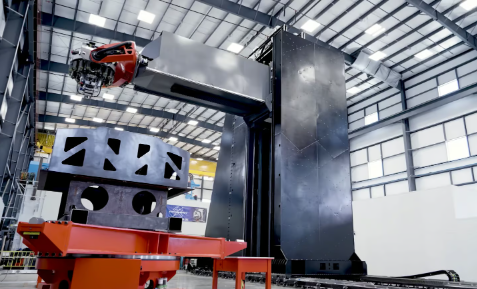Rocket Lab Builds the World’s Largest 3D Printer for its Neutron Rocket

You might not have heard about Rocket Lab, particularly because of the popularity of SpaceX, but it’s one of the most advanced space companies out there. Headquartered in Long Beach, California, Rocket Lab was founded by Peter Beck to launch small satellites and spacecraft cost-effectively and at scale. Recently, the company made waves in the segment, as it was included in NASA’s Artemis program, which would send people back to the moon. Rocket Lab’s biggest project to date, though, is the Neutron rocket, a direct competitor to SpaceX’s Falcon 9.
Unlike its rival, which is made from 300-Series HFS stainless steel, though, the Rocket Lab Neutron is made from composite materials. This can dramatically save weight while improving the structural rigidity of the spacecraft. Still, the company faces huge challenges to make these materials work on a big rocket. To start with, the Neutron is 43 meters (141 ft) tall and 7 meters (23 ft) wide, so making big pieces of carbon composites is a challenging task. Until now, Rocket Lab utilized its workforce to lay the carbon fiber onto the molds by hand, which took several weeks to complete.
However, with the new Automated Fiber Placement (AFP) machine, Rocket Lab was able to cut the production time to a single day. This state-of-the-art manufacturing machine weaves carbon fiber at 100 meters (328 ft) per minute. Moreover, it can work in any direction, much like a 3D printer, which is crucial to enhance the material’s properties and produce more complex forms. The AFP is 12 meters (39 ft) tall, but it can also move laterally by 30 meters (98 ft), so it’s capable of producing the largest carbon fiber pieces necessary for the Neutron rocket.
The machine is fully automated and has a built-in real-time inspection system that can detect the tiniest of defects in the laminated carbon. If a defect is detected, the AFP can then alert the machine operator of any issues.
“As we build the world’s largest carbon composite rocket, it makes sense that we require a world-first carbon composite fiber placement machine,” said Rocket Lab CEO and founder, Peter Beck.
“We’re combining our proprietary flight-proven carbon composite technology, additive manufacturing, and autonomous robotics to design and build large-scale aerospace components at a pace that will support not only Neutron’s launch cadence but support Electron and carbon composites structures for our spacecraft customers too,” Beck added.

 Tech Steel & Materials
Tech Steel & Materials
Comments are closed